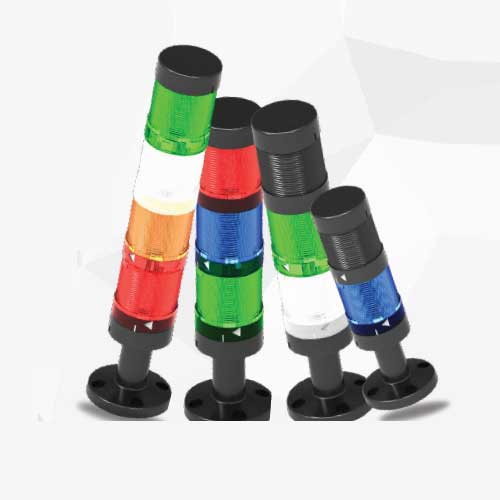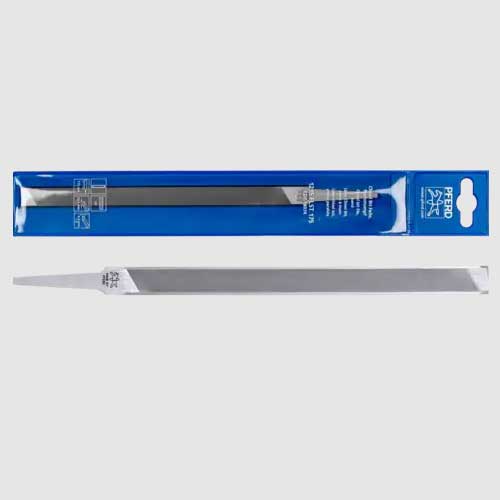Schedule a Call Back
Plasma and Oxyfuel Cutting: A Comparison
 Technical Articles
Technical Articles- Jun 09,11
Several types of metal cutting solutions exist in the market today. Selecting the right technology that maximises investment and produces the best cutting results can be a business' best decision.
 In India, oxyfuel and plasma are the most widely used cutting technologies. And although oxyfuel has long been seen as a sufficient cutting system for a variety of needs, plasma is fast becoming the cutting solution of choice as technology improvements in recent years have made it even more versatile than oxyfuel - yet with greater cost efficiencies. Oxyfuel cutting employs a chemical (exothermic) reaction between oxygen and steel to generate sufficient heat to melt the steel, which is blown out of the gap by the gases used. This method is only suitable for cutting carbon steel and is typically used to cut plates that are more than 50 mm thick. Oxyfuel cutting is not effective on stainless steel or aluminium. Plasma cutting uses a high-temperature, electrically-conductive gas such as nitrogen and oxygen to cut through any material that can conduct electricity. It is suitable for ferrous and non-ferrous material, and metal that is in any condition (even rusted, painted, or grated). It usually covers thicknesses ranging from gauge to 50mm, but recent technological improvements have made way for plasma systems that can pierce 75 mm-thick metal and sever 160 mm-thick metal. With these basic differences between oxyfuel and plasma, companies in India may be able to instantly decide on which cutting system to use based on their critical business needs. But for more specific factors such as ease-of-use, cut quality, productivity and cost, this article explores the comparisons that companies should consider before deciding whether oxyfuel or plasma is the best way forward.
In India, oxyfuel and plasma are the most widely used cutting technologies. And although oxyfuel has long been seen as a sufficient cutting system for a variety of needs, plasma is fast becoming the cutting solution of choice as technology improvements in recent years have made it even more versatile than oxyfuel - yet with greater cost efficiencies. Oxyfuel cutting employs a chemical (exothermic) reaction between oxygen and steel to generate sufficient heat to melt the steel, which is blown out of the gap by the gases used. This method is only suitable for cutting carbon steel and is typically used to cut plates that are more than 50 mm thick. Oxyfuel cutting is not effective on stainless steel or aluminium. Plasma cutting uses a high-temperature, electrically-conductive gas such as nitrogen and oxygen to cut through any material that can conduct electricity. It is suitable for ferrous and non-ferrous material, and metal that is in any condition (even rusted, painted, or grated). It usually covers thicknesses ranging from gauge to 50mm, but recent technological improvements have made way for plasma systems that can pierce 75 mm-thick metal and sever 160 mm-thick metal. With these basic differences between oxyfuel and plasma, companies in India may be able to instantly decide on which cutting system to use based on their critical business needs. But for more specific factors such as ease-of-use, cut quality, productivity and cost, this article explores the comparisons that companies should consider before deciding whether oxyfuel or plasma is the best way forward.
 Ease of Use
Ease of Use
In recent years, ease-of-use of technical processes has been gaining importance as a key decision factor in India, primarily because it minimises training, improves safety, and ultimately increases profitability. And comparing oxyfuel to plasma, the latter prevails over most ease-of-use considerations. For one, plasma is easier and safer to operate because it runs on compressed air. This means that there are no gases to mix or regulate. In using oxyfuel, operators need to set and maintain the flame chemistry. This skill takes time and practice to master. The gases used in the oxyfuel process also pose a safety hazard in the presence of the open flame. Also, compared to oxyfuel, plasma is more flexible because it can cut a wider range of metal types and thicknesses, so cutting metal of varying thicknesses is as easy as changing the metal plates, rather than changing cutting systems altogether. In addition, plasma can bevel cut or cut expanded metal, both of which are difficult to cut with oxyfuel.
Cut Quality
 As demand for Indian exports continues on the upswing, manufacturers in India now have to compete on product quality more than ever. This makes cut quality another driving factor when companies select their metal cutting equipment. Overall, plasma produces more precise and cleaner cuts than oxyfuel. The following factors will explain why.
As demand for Indian exports continues on the upswing, manufacturers in India now have to compete on product quality more than ever. This makes cut quality another driving factor when companies select their metal cutting equipment. Overall, plasma produces more precise and cleaner cuts than oxyfuel. The following factors will explain why.
Angularity: Both oxyfuel and plasma processes produce different edge qualities in terms of angularity, which refers to how large the angle is as a deviation from a straight edge. Comparing oxyfuel and plasma cutting, the latter produces a lower edge deviation.
 Angularity is further improved when operators put together the right set of equipment for a comprehensive, integrated plasma system, especially for the cutting of holes. Such new technology uses a specific combination of cutting parameters to produce perfectly-round holes.
Angularity is further improved when operators put together the right set of equipment for a comprehensive, integrated plasma system, especially for the cutting of holes. Such new technology uses a specific combination of cutting parameters to produce perfectly-round holes.
The system virtually eliminates tapers so that instead of producing holes that narrow, the holes have even diameters front through back. The technology also minimises dings so the overall cut quality is improved.
Kerf: This refers to the width of the material that is removed during the cutting process. For plasma, this typically varies from 16 mm to 103 mm, depending on the thickness of the plate. Oxyfuel kerfs are in excess of this, so wastage is greater, and cut quality is compromised.
Heat-affected Zone: Another factor that affects cut quality is the size of the heat-affected zone (HAZ). Intense heat changes the chemical structure of the metal, discolouring the heat-affected edge (heat tint), and warping it. This makes the piece potentially unsuitable for secondary welding operations until the heat-affected edge is removed.
 Both oxyfuel cutting and plasma cutting will produce heat-affected edges, although plasma produces those at a smaller depth. HAZ is generally related to speed - the slower the cutting, the larger the HAZ - which explains why oxyfuel processes produce larger HAZs. For plasma, the amount of warping (i.e., hardness level of the metal) is dependent on the gases used. Nitrogen gas produces the hardest, most brittle edge, while oxygen gas produces the least.
Both oxyfuel cutting and plasma cutting will produce heat-affected edges, although plasma produces those at a smaller depth. HAZ is generally related to speed - the slower the cutting, the larger the HAZ - which explains why oxyfuel processes produce larger HAZs. For plasma, the amount of warping (i.e., hardness level of the metal) is dependent on the gases used. Nitrogen gas produces the hardest, most brittle edge, while oxygen gas produces the least.
Dross: Plasma and oxyfuel both produce a certain amount of dross or slag. As dross is formed, it melts and re-solidifies, welding itself back to the metal. It adheres most easily to hot surfaces, which means oxyfuel cutting, which has a large HAZ, will produce great amount of dross.
 In addition, due to the slower cutting speed of oxyfuel, the resulting dross that has formed and solidified during cutting is often harder to remove at the end of the process.
In addition, due to the slower cutting speed of oxyfuel, the resulting dross that has formed and solidified during cutting is often harder to remove at the end of the process.
On the other hand, plasma cutting offers virtually dross-free cutting up to certain thicknesses, beyond which some dross is produced. Even then, dross produced by plasma is typically easy to remove, first of all because there is less of it, and second, because plasma produces a narrower HAZ so the dross has less hot surface area to adhere to.
Finally, if cutting results in a large amount of dross, secondary operations, such as dross removal, will need to be carried out. This is the case with oxyfuel. Not only is cut quality then compromised, the amount of time needed for a single part to be produced is much increased, subsequently decreasing overall productivity.
Productivity
 Productivity is important to any company because it boils down to the number of parts produced within a given time period, and will affect the number of orders that the business can fulfil. Several factors affect efficiency, with the most critical being cutting speed. At a minimum, plasma users can expect speeds that are twice as fast as oxyfuel, for metals that are 25mm thick or less.
Productivity is important to any company because it boils down to the number of parts produced within a given time period, and will affect the number of orders that the business can fulfil. Several factors affect efficiency, with the most critical being cutting speed. At a minimum, plasma users can expect speeds that are twice as fast as oxyfuel, for metals that are 25mm thick or less.
And as thickness decreases, those speeds increase, enabling speed advantages of up to 12 times faster over oxyfuel. This increased speed means operators can cut more parts in less time. Other than cutting speed, productivity is also affected by delays due to piercing.
It can easily take up to 30 seconds to pierce a 15 mm-thick steel with oxyfuel because the metal needs to be pre-heated to nearly 1000?C, so the number of parts the system can produce in a given time is further reduced. Plasma, on the other hand, takes less than two seconds to pierce 15 mm-thick steel, and is therefore more efficient.
Kotsons Pvt Ltd, one of India's top three transformer manufacturers, experienced greater efficiency when it adopted plasma systems. The company enjoyed cutting speeds that are 10 times faster after the conversion, and its investment was fully recovered in just six months.
Mr Pawan Jain, Managing Director, said, "Business has grown dramatically since we started using plasma cutters. The new plasma systems have significantly increased our productivity level and helped us rake in healthy annual profits."
Operating Cost
One final and equally important factor to consider here is operating cost. For plasma and oxyfuel, three factors - consumables, power and gas - impact the overall operating cost of the system.
The table below compares the costs incurred by the three factors, for both plasma and oxyfuel cutting.
| Cost of Cutting/ Hour (in US$) | Plasma | Oxyfuel |
|---|---|---|
| Consumables | $16.77 | $0.06 |
| Power | $4.00 | $0.00 |
| Gas | $7.90 | $6.20 |
| Operating cost/ hour | $28.67 | $6.26 |
| No. of parts produced/ hour | 222 | 25 |
| $/part (cost per hour divided by number of parts) | $0.13 | $0.25 |
As is evident from the data above,
1. Consumables make up the largest portion of operating costs when cutting with plasma. However, long-lasting consumables are now available to help keep operating costs low.
2. Power costs are negligible for oxyfuel, but a small expense is needed for plasma.
3. Gas costs are higher for plasma than oxyfuel.
While the operating cost of oxyfuel is seemingly lower than plasma, it is not the most economical or efficient system to operate. The faster cutting speed of plasma produces more parts so operating costs are spread out over a larger number of parts.
The lower cost per part coupled with faster cutting speeds support the fact that plasma results in higher profitability for users, and is therefore more economically efficient than oxyfuel.
Conclusion
In India, oxyfuel and plasma cutting are both well-established thermal processes for cutting metals. Each has its own advantages and shortcomings, and choosing between the two depends on companies' specific business needs.
Comparatively, plasma provides more benefits overall, such as greater ease of use, better cut quality, higher productivity, and lower operating costs. For cutting metal of between gauge to 50mm, or even 75 mm thick, the combined benefits of these factors undeniably provide compelling reasons for plasma adoption over oxyfuel.
(Article courtesy: Hypertherm. The company designs and manufactures advanced metal cutting systems for use in a variety of industries such as shipbuilding, manufacturing, and automotive repair. Its product line includes handheld and mechanised plasma systems, plasma and laser consumables, as well as CNC motion and height controls and cutting software. Hypertherm systems are trusted for performance and reliability that results in increased productivity and profitability for tens of thousands of businesses. For more information, please visit www.hypertherm.com or email: technology.hypertherm@hypertherm.com)
Related Products

Industrial Tower Lights
Esbee
Electrotech LLP offers a wide range of industrial tower lights.

Chain Saw Files Hand
PFERD offers a wide range of chain saw files hand.

Single Pole, Non-directional, Idmt O/c or E/f Relay
JVS Electronics Pvt Ltd offers a wide range of Single Pole, Non-Directional, IDMT O/C Or E/F Relay JRC 051P/JRC 051













